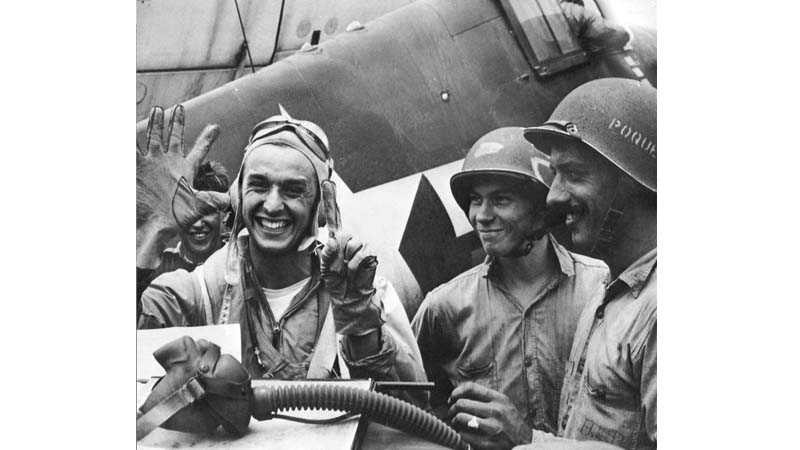This Day in History
Battle of the Philippine Sea

The Battle of the Philippine Sea took place between June 19th and June 20th, 1944. This battle was said to be the last great carrier battle of World War Two. The Battle of Midway in 1942 had done a great deal to damage Japan’s carrier force, but even into 1944, Japan statistically had a larger carrier force than America. Despite America’s huge military capability, the Japanese Navy still represented a threat to her – especially in America’s desire to advance to the Marianas.
It began on the morning of June 19, when Admiral Ozawa Jisaburo, determined on a showdown with the US invaders, sent 430 planes in four waves against ships under the command of Admiral Raymond Spruance. The result for the Japanese was a disaster: in the first day of the battle the Japanese lost more than 200 planes and two regular carriers; and, as their fleet retired northward toward safe harbour at Okinawa, it lost another carrier and nearly 100 more planes. Having already achieved a great victory, Spruance decided late on the second day not to press his attack further, a controversial decision to this day. During the two days of battle, US losses totaled 130 aircraft and some damage to ships.
The poor showing by the Japanese has been attributed to many factors, but two may be singled out for special mention: pilots and their aircraft. Some Japanese pilots went into action with as little as three months of training, whereas many US pilots had spent two full years in training. Japanese planes were highly maneuverable and had a longer range than US planes, but they were inferior in several respects, particularly in their inadequate armour protection and lack of self-sealing fuel tanks. US submarines also played an important but less publicized role in providing US commanders with intelligence of enemy movements and in sinking Japanese ships.
—Encyclopaedia Britannica




